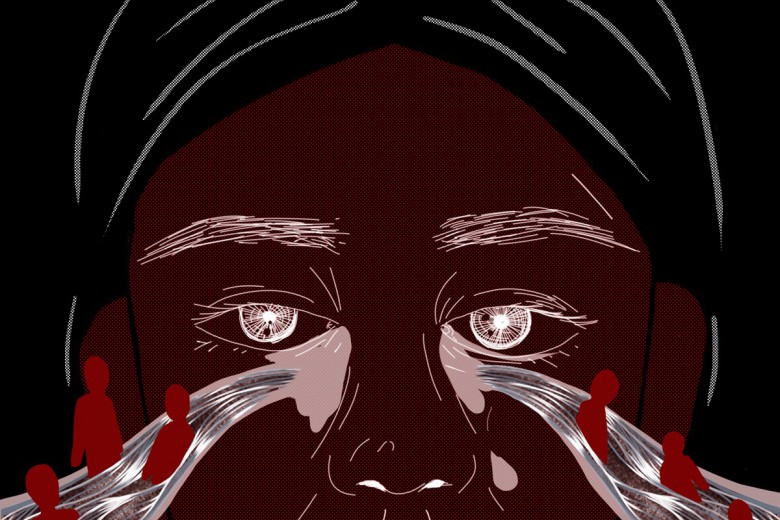The attempt to write history ‘the way it really happened’ necessarily presents insurmountable problems. It implies the possibility of there being one version of events, shared by many diverse participants. Yet how can we begin to synthesize different versions of history that exist in separate and often unrelated forms? For myself, deciding to learn more about the historical connections between white women and black people, this question became more and more important as I searched for clues in what was available. I began to read more feminist history, that is, history rewritten by fem-inists in pursuit of the conditions that have shaped women’s lives and their resistance in the face of economic, social and political subordination. I tried to match this up with what little has been published about black British history. Inevitably the first area was limited to white women and the second mainly to black men, since there were far fewer black women than men living in Britain until some recent immigration began in the 1950s. Another source of information was the wealth of written material on slavery, abolition, colonialism and racism itself, some of which included a perspective on gender but most of which did not.
The insularity of British women’s history convinced me further that this was a key to understanding the way that racism had been separated from gender relations in contemporary analysis. It is still rare, for example, to find any white feminist history of the nineteenth century that relates to the British Empire, except as a force that touched women’s lives in Britain or as a possible escape route for women who failed to make a satisfying life at home. Overlooking the existence of imperialist ideologies suggests that the question of race has no relevance to the history of white women. This is despite the fact that black people have lived in Britain for four hundred years as part of the African and Asian diasporas, fighting for their own liberation as well as playing a part in working-class politics. Apart from this, British rule extended until relatively recently right round the world; English people did not exist in a vacuum on their precious island within this Empire, oblivious of what was going on in their name. Nor were women, white or black, excluded from the colonizing process.
Kipling’s phrase ‘the White Man’s Burden’ is often interpreted as referring to the great weight of uncivilized, non-Christian people throughout the world who needed colonial rule to save them from themselves. Reading the poem of the same name I wonder whether it was not intended as an ironic comment on the obsession of Europeans to justify their commercial exploitation of colonies by claiming that their rule was spreading civilization and rescuing savages from themselves. But however you want to take it, there is still the question of whether Kipling’s White Man could exist without White Woman somewhere at his side. We are entitled to ask what her Burden was, and what she has done with it since.
Gender played a crucial role in organizing ideas of ‘race’ and ‘civilization’, and women were involved in many different ways in the expansion and maintenance of the Empire. The presence of white women, for example, demanded that relations between the ‘races’ be highly regulated. The increasing number of white women who travelled out to join husbands and families in the colonies, or to work in their own right as missionaries, nurses and teachers, often had far-reaching effects on the social lives of male settlers, and consequently on the status and sexual exploitation of black women. This was particularly true where the military were concerned, since prostitution was often viewed by the colonial authorities as a necessary evil to service the working-class troops who were not permitted to bring their British wives. During the late Victorian period when theories of race and eugenics were being used to bolster the concept of the innate superiority of the white race above all others, English women were seen as the ‘conduits of the essence of the race’. They not only symbolized the guardians of the race in their reproductive capacity, but they also provided – as long as they were of the right class and breeding – a guarantee that British morals and principles were adhered to in the settler community, as well as being transmitted to the next generation. In the debates and discussions on the volatile situation in South Africa in the early twentieth century, it was thought to be particularly important that British women made their presence felt there.
…
Inevitably, the colonial situation varied from place to place, and from one continent to another. The significance of white women’s position within the ruling elite was not fixed either in time or geography, but varied according to the state of relations between those being colonized and those exercising power. One of the recurring themes in the history of colonial repression is the way in which the threat of real or imagined violence towards white women became a symbol of the most dangerous form of insubordination. In any colony, the degree to which white women were protected from the fear of sexual assault was a good indication of the level of security felt by the colonial authorities. In a study of European women in colonial Nigeria, Helen Callaway writes that ‘the question of European women’s “sexual fear” appears to arise in special circumstances of unequal power structures at times of particular political pressure, when the dominant group perceives itself threatened and vulnerable’’. Protecting the virtue of white women was the pretext for instituting draconian measures against indigenous populations in several parts of the Empire. In Papua, New Guinea, a law was passed – called the White Women’s Protection Ordinance – which made any ‘native’ convicted of rape or even attempted rape of a European female liable to the death penalty. The law was passed during a frenzy of racist passions following reports of two unconnected assaults on white females in a short space of time. Contemporary records reveal that this was happening in a period of social and political uncertainty in the colony, and that the actual level of rape and sexual assault bore no relation to the hysteria that the subject aroused. White women provided a symbol of the most valuable property known to white man and it was to be protected from the ever-encroaching and disrespectful black man at all costs.
…
The historical memory of white women’s presence in the Empire, shaped by events such as these, cements the image of the powerless, vulnerable female. However, an equally fruitful and revealing discourse emerges when white women chose to defy this role through what they did and said. There are many instances where English women challenged the expectations arising from their allotted place within the colonial system, preferring to live independently and inviting scandal and frequently loneliness by doing so. There are scattered examples of women who engaged in anti-slavery politics, who organized campaigns to support black women in different parts of the Empire, or who gave their energy to nationalist movements, but they remain eccentric individuals at best. Whereas feminist historians have uncovered many examples of feminists who braved convention at home to fight to improve the lives and opportunities of women of all classes and backgrounds, there has been little corresponding interest in British women who came face to face with the complexities of racism and male power. The exceptions to this usually fall in the ‘intrepid explorer’ category: women like Mary Kingsley who are frequently remembered or even celebrated for their ‘feminism’ – that is, their attitudes to the constraints of gender – rather than their role in the imperialist project and the way they dealt with racism and cultural difference.
The struggle for history is about much more than establishing what actually happened. It involved those who have so far been excluded or marginalized, recognizing themselves not as passive victims but as actors who have had an instrumental role in the past. Recognizing that there is a whole dimension of British history now demanding incorporation into accounts that were previously regarded as radical, or at least alternative, has enormous implications, not just for feminist historians but for historians of race and class as well. I am not speaking about simply bringing a history of black people or of racism alongside what is known about white women’s history, nor of inserting gender into existing accounts of race and class. Applying a perspective of race, class and gender to historical inquiry should effectively transform interpretations based on race and class or class and gender. The anti-slavery movement, for example, coincided with a period of tumultuous social change in Britain. Studies of women’s abolitionist work have so far been mainly restricted to a limited ‘women’s contribution’ style of inquiry, but the evidence these studies offer us could also be used in conjunction with other material to speculate both on the changing dynamics of social, economic and political relations and on the politics of challenging slavery itself. To take another example which I shall be exploring later on, colonial society involved a highly complex web of social relations based on race, class and gender. Learning about what white women did to pass the time in that society would not necessarily contribute much to an analysis of how it reproduced itself, whereas prising apart the social relations which connected white women to white men as well as black and black women is likely to shed more light on the mechanics of power and domination under colonialism.
The purpose of exploring the histories of slavery and imperialism is not to bring white women to account for past misdeeds, nor to search for heroines whose reputations can help to absolve the rest from guilt, but to find out how white women negotiated questions of race and racism – as well as class and gender. In other words what we need to do is to trace ideas that have historically constructed definitions of white womanhood and to ask how these ideas have been formed either in conjunction with or in opposition of feminist ideology.
Excerpt from Beyond the Pale: White Women, Racism and History, published by Verso in 1992, 2015.







